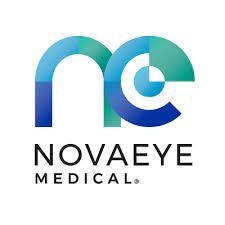MAR 27, 2020
Updated March 27, 2020, 6:00 p.m. PT. The following sections have been updated in the past 24 hours: Vaccine and treatment options: Use of chloroquine and hydroxychloroquine
The Academy is sharing important ophthalmology-specific information related to the novel coronavirus, referred to as severe acute respiratory syndrome coronavirus 2 (SARS-CoV-2), which was previously known by the provisional name 2019-nCoV. The highly contagious virus can cause a severe respiratory disease known as COVID-19.
This page is principally authored by James Chodosh, MD, MPH, with assistance from Gary N. Holland, MD, and Steven Yeh, MD.
What you need to know
- Several reports suggest the virus can cause a mild follicular conjunctivitis otherwise indistinguishable from other viral causes, and possibly be transmitted by aerosol contact with conjunctiva.
- Patients who present to ophthalmologists for conjunctivitis who also have fever and respiratory symptoms including cough and shortness of breath, and who have recently traveled internationally, particularly to areas with known outbreaks (China, Iran, Italy and South Korea, or to hotspots within the United States), or with family members recently back from one of these areas, could represent cases of COVID-19.
- The Academy and federal officials recommend protection for the mouth, nose and eyes when caring for patients potentially infected with SARS-CoV-2.
- The virus that causes COVID-19 is very likely susceptible to the same alcohol- and bleach-based disinfectants that ophthalmologists commonly use to disinfect ophthalmic instruments and office furniture. To prevent SARS-CoV-2 transmission, the same disinfection practices already used to prevent office-based spread of other viral pathogens are recommended before and after every patient encounter.
Background
The SARS-CoV-2 is an enveloped, single-stranded RNA virus that causes COVID-19. Although the virus appears not quite as likely to cause fatalities as the SARS coronavirus or MERS coronavirus, a significant number of global fatalities have already occurred. There have been numerous worldwide reports of infections, including in the United States.
Patients typically present with respiratory illness, including fever, cough and shortness of breath; diarrhea is common early in infection and conjunctivitis has also been reported. Severe complications include pneumonia. Symptoms can appear as soon as 2 days or as long as 14 days after exposure. A March 10 study in the Annals of Internal Medicine found that the mean incubation period for SARS-CoV-2 was 5 to 7 days. More than 97% of those who developed symptoms did so within 11.5 days of exposure, findings that further support current 14-day quarantine recommendations.
Current understanding about how COVID-19 spreads is based largely on what is known about other similar coronaviruses. The virus is believed to spread primarily via person-to-person through respiratory droplets produced when an infected person coughs or sneezes. It also could be spread if people touch an object or surface with virus present from an infected person, and then touch their mouth, nose or eyes. Viral RNA has also been found in stool samples from infected patients, raising the possibility of transmission through the fecal/oral route.
Currently thinking is that SARS-CoV-2 can be spread by asymptomatic transmission. A Feb. 21 report in JAMA details a case of an asymptomatic carrier who possibly infected 5 family members despite having normal chest computed tomography (CT) findings. In addition, Li Wenliang, MD, the whistleblower ophthalmologist who sounded the initial alarms on the coronavirus, believed he was infected by an asymptomatic glaucoma patient. These reports, however, remain preliminary.
In a study published in the New England Journal of Medicine, scientists were able to detect viable SAR-CoV-2 in aerosols up to 3 hours post-aerosolization. This experiment was performed in a Goldberg drum that lacks ventilation, which might not necessarily reflect how the virus would behave in real-life conditions. The study also found infectious virus could survive up to 24 hours on cardboard, up to 4 hours on copper and up to 2 to 3 days on plastic and stainless steel. In another study by the CDC of the recent cruise ship outbreaks of COVID-19, SARS-CoV-2 RNA (not necessarily indicating infectious virus) was identified on various surfaces within cabins of passengers who tested positive up to 17 days after they had disembarked the ship. There are no changes in recommendations related to use of masks on the basis of these reports, but they do emphasize the importance of handwashing and disinfecting surfaces and materials possibly contaminated by respiratory secretions from infected patients.
Vaccine and treatment options
At this time, there is no vaccine to prevent infection, but on March 5, mRNA coronavirus vaccine trials began enrollment at Kaiser Permanente Washington Health Research Institute in Seattle, and at Emory Children’s Center in Decatur. Both institutions are members of the Infectious Diseases Clinical Research Consortium, a clinical trials network supported by the National Institute of Allergy and Infectious Diseases (NIAID).
Currently, there are no proven agents for prophylaxis or therapy for SARS-CoV-2. An investigational drug, remdesivir, has shown activity in vitro and is currently in clinical trials. Chloroquine and hydroxycholoquine are oral agents approved for malaria and autoimmune disorders, respectively. Both drugs showed promise in nonrandomized trials and are under further study to evaluate their safety and efficacy in the treatment of COVID-19. More information about developments in the treatment of COVID-19 by these agents is available from the CDC. There are also nascent reports of efforts to use convalescent sera from COVID-19 survivors as therapy.
New Use of chloroquine and hydroxychloroquine
The American Academy of Ophthalmology has no opinion on the use of chloroquine or hydroxychloroquine in COVID-19 patients. However, in a review of published guidelines for the use of these 2 drugs as treatment for COVID-19, a working group* from the Asia-Pacific Vitreo-retina Society found that proposed doses in many of the ongoing studies worldwide exceeded the maximum daily dose considered safe for long-term therapy (generally <5mg/kg of real weight for hydroxychloroquine) for rheumatic and other chronic diseases (WF Mieler, MD, personal communication, March 25, 2020).
The risk of irreversible maculopathy at these higher doses for short periods of time is unknown. Patients should be informed of the potential for macular toxicity before starting therapy. Furthermore, the need for baseline fundus examination and/or imaging is also unknown in cases with high doses over a relatively short duration. Additional diagnostic testing, such as an ERG, prior to placing a patient on hydroxychloroquine for treatment of COVID-19 is likely unnecessary due to the short treatment duration. Additionally, performing an ERG in this setting carries an unnecessary risk of virus transmission. Until more is learned about the toxicity associated with current regimens, decisions should be made on an individual basis, taking into consideration any pre-existing retinal disease. As in all cases, the Academy urges ophthalmologists to make decisions guided by available scientific evidence.
* Ruamviboonsuk P, Lai T, Chang A, Lai C, Mieler W, Lam D
Ophthalmology ties
Two published reports and a more recent news article suggest the virus can cause conjunctivitis. Thus, it is possible that SARS-CoV-2 is transmitted by aerosol contact with the conjunctiva.
- In a Journal of Medical Virology study of 30 patients hospitalized for COVID-19 in China, 1 had conjunctivitis. That patient—and not the other 29—had SARS-CoV-2 in their ocular secretions. This suggests that SARS-CoV-2 can infect the conjunctiva and cause conjunctivitis, and virus particles are present in ocular secretions.
- In a larger study published in the New England Journal of Medicine, researchers documented “conjunctival congestion” in 9 of 1,099 patients (0.8%) with laboratory-confirmed COVID-19 from 30 hospitals across China.
- In a story just out from CNN, a registered nurse in a nursing home reported that red eye was a common early sign in elderly patients who then became sick with COVID-19.
While it appears conjunctivitis is an uncommon event as it relates to COVID-19, other forms of conjunctivitis are common. Affected patients frequently present to eye clinics or emergency departments. That increases the likelihood ophthalmologists may be the first providers to evaluate patients possibly infected with COVID-19.
Therefore, protecting your mouth, nose (e.g., an N-95 mask) and eyes (e.g., goggles or shield) is recommended when caring for patients potentially infected with COVID-19. In addition, slit-lamp breath shields (e.g., here ) are helpful for protecting both health care workers and patients from respiratory illness. Free slit-lamp breath shields are being offered by some manufacturers, including Topcon and Zeiss.
Questions you should ask to identify patients with possible exposure to SARS-CoV-2
- Does your patient have fever or respiratory symptoms?
- Has your patient or their family members traveled recently? Red flags include international travel to countries such as China, Iran, Europe and South Korea, and domestic travel to states with high numbers of infected patients (e.g., Washington, California, New York).
The CDC is urging health care providers who encounter patients meeting these criteria to immediately notify both infection control personnel at your health care facility and your local or state health department for further investigation of COVID-19.
Recommended protocols when scheduling or seeing patients
- In response to the state of emergency declared at the federal level and in multiple states as of March 14, 2020, as well as the US. Surgeon General’s warning, clinicians should postpone those outpatient visits and procedures that can be safely delayed, particularly in elderly patients and those with comorbidities.
- Reschedule appointments for patients with nonurgent ophthalmic problems, and avoid using equipment that cannot be safely disinfected, such as some visual field analyzers.
- If the office setup permits, patients who come to an appointment should be asked prior to entering the waiting room about respiratory illness and whether they or a family member have traveled to a high-risk area in the past 14 days. If they answer yes to either question, they should be sent home and told to speak to their primary care physician.
- Keep the waiting room as empty as possible, advise seated patients to remain at least 6 feet from one another. As much as prudent, reduce the visits of the most vulnerable patients.
- If a patient with known COVID-19 infection needs urgent ophthalmic care, they should be sent to a hospital or center equipped to deal with COVID-19 and urgent eye conditions, ideally in a hospital setting under hospital infection control conditions.
- The use of commercially available slit-lamp barriers or breath shields is encouraged, as they may provide a measure of added protection against the virus. These barriers do not, however, prevent contamination of equipment and surfaces on the patient’s side of the barrier, which may then be touched by staff and other patients and lead to transmission. Homemade barriers may be more difficult to sterilize and could be a source of contamination. In general, barriers are not a substitute for careful cleaning of equipment between patients and asking those patients who cough, sneeze, or have flu-like symptoms to wear masks during examination.
- To further decrease the risk of any virus transmission, ophthalmologists should inform their patients that they will speak as little as possible during the slit-lamp examination, and request that the patient also refrain from talking.
Telemedicine services
The CMS and HHS have allowed for the expanded use of telehealth services during the COVID-19 public health crisis. According to the CMS, this option for services applies whether or not patients have COVID-19 symptoms. There are 3 options for telehealth and other communications-based technology services: telephone services, internet-based consultation or telemedicine exam. For complete and updated information, visit the Academy’s Coding for Phone Calls, Internet and Telehealth Consultations.
Interim guidance for triage of ophthalmology patients
Clinical Situation |
Patient Management / Precautions |
| 1. Routine ophthalmic issues and previously scheduled appointments |
|
| 2.Urgent ophthalmology appointment for a patient with no respiratory illness symptoms, no fever, and no COVID-19 risk factors |
|
| 3. Urgent ophthalmic problem in a patient with respiratory illness symptoms, but no fever or other COVID-19 risk factor |
|
| 4. Urgent ophthalmic problem in a patient who is at high risk for COVID-19 |
|
| 5. Urgent ophthalmic problem in a patient with documented COVID-19 (or person under investigation [PUI]) |
[Read the American College of Surgeon’s guidelines for operating on COVID-19 patients] |
* Standard (Universal) Precautions: Minimum infection prevention precautions that apply to all patient care, regardless of suspected or confirmed infection status of patient, in any health care setting (e.g., hand hygiene, cough etiquette, use of personal protective equipment, cleaning and disinfecting environmental surfaces). See CDC: Standard Precautions.
† Currently, there are national and international shortages of personal protective equipment (PPE), which also warrant consideration. Excessive use of PPE may deplete the supply of critical equipment required in the future for patients with COVID-19 as the epidemic expands. Use of PEE should be considered on an institutional and case-by-case basis; universal usage for all patient encounters is not appropriate.
‡ Transmission Precautions: Second tier of basic infection control, used in addition to Standard Precautions when patients have diseases that can spread through contact, droplet or airborne routes, requiring specific precautions based on the circumstances of a case. Transmission precautions are required for cases of suspected COVID-19. See CDC: Transmission-Based Precautions.
Guidance for outpatient clinics and elective surgery
In response to the state of national emergency declared at the federal level, particularly as COVID-19 progresses in a given community, ophthalmologists should seriously consider both the intensity of clinic scheduling and the issue of elective surgeries, particularly in elderly patients and those with medical comorbidities.
The CDC has issued mitigation plans, including a recommendation for the cancellation or reduction of elective procedures in health care settings, for the following communities: Santa Clara, California; New Rochelle, New York; Florida; Massachusetts; and Seattle, Washington.
Outpatient clinics
Ophthalmology offices should provide only urgent care, make efforts to decompress their waiting areas and consider alternatives such as encouraging patients to wait in other locations (e.g., their cars or outdoor spaces). Mobile phone calls or other approaches can be used by office staff to notify patients when they should return to the office.
Elective surgical procedures
The American Academy of Ophthalmology supports the recommendation from American College of Surgeons and guidelines from the CDC regarding canceling elective surgeries. Specifically, the CDC recommends that health care providers:
- Delay all elective ambulatory provider visits
- Reschedule elective and nonurgent admissions
- Delay inpatient and outpatient elective surgical and procedural cases
- Postpone routine dental and eye care visits
Circumstances vary for hospitals, hospital-based outpatient surgery departments, freestanding ASCs and office-based procedures. However, all ophthalmologists should now adjust their surgical volumes. Even outpatient ASC-based procedures may expose other patients and health care workers to virus shed from asymptomatic patients or even asymptomatic physicians. Elective surgical procedures also deplete scarce personal protective equipment, including but not limited to masks, gowns, gloves, and face shields.
Barring special extenuating circumstances for the patient or physician, the Academy recommends postponing all elective visits and surgery indefinitely, to be reinstated only upon recommendation of public health authorities This recommendation is consistent with those of the American College of Surgeons, the CDC, the U.S. Surgeon General and many other organizations. As noted above, the primary purposes are to reduce the risks of disease transmission and to help conserve scarce resources. The definition of “elective” is up to the ophthalmologist but in general should be defined as anything that can be postponed for 2 months without substantive risk to the patient’s vision, material functioning or general health.
Environmental cleaning and disinfection recommendations
Rooms and instruments should be thoroughly disinfected after each patient encounter. Wear disposable gloves when cleaning and disinfecting surfaces, and discard the gloves after use. Slit lamps, including controls and accompanying breath shields, should be disinfected, particularly wherever patients put their hands and face. The current CDC recommendations for disinfectants specific to COVID-19 include:
- Diluted household bleach (5 tablespoons bleach per gallon of water)
- Alcohol solutions with at least 70% alcohol.
- Common EPA-registered household disinfectants currently recommended for use against SARS-CoV-2 include Clorox brand products (e.g., disinfecting wipes, multi-surface cleaner + bleach, clean up cleaner + bleach), Lysol brand products (e.g., professional disinfectant spray, clean and fresh multi-surface cleaner, disinfectant max cover mist), Purell professional surface disinfectant wipes and more. The EPA offers a full list of antimicrobial products expected to be effective against COVID-19 based on data for similar viruses.
Tonometer tip cleaning
The virus causing COVID-19 is an enveloped virus, unlike adenoviruses that are much more resistant to alcohol. If a tonometer tip is cleaned with alcohol and allowed to dry in room air, 70% alcohol solutions should be effective at disinfecting tonometer tips from SARS-CoV-2. However, alcohol will not effectively sterilize the tip against adenoviruses. Use single-use, disposable tonometer tips if available. Tips cleaned with diluted bleach remain a safe and acceptable practice.






















